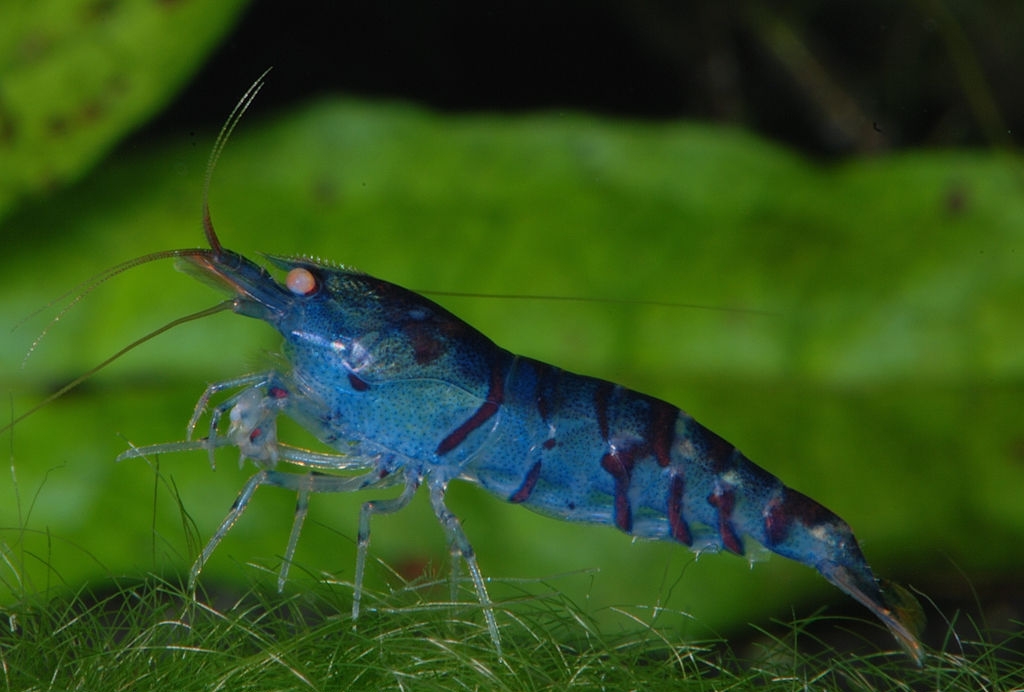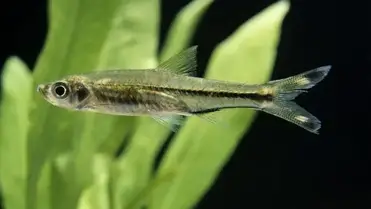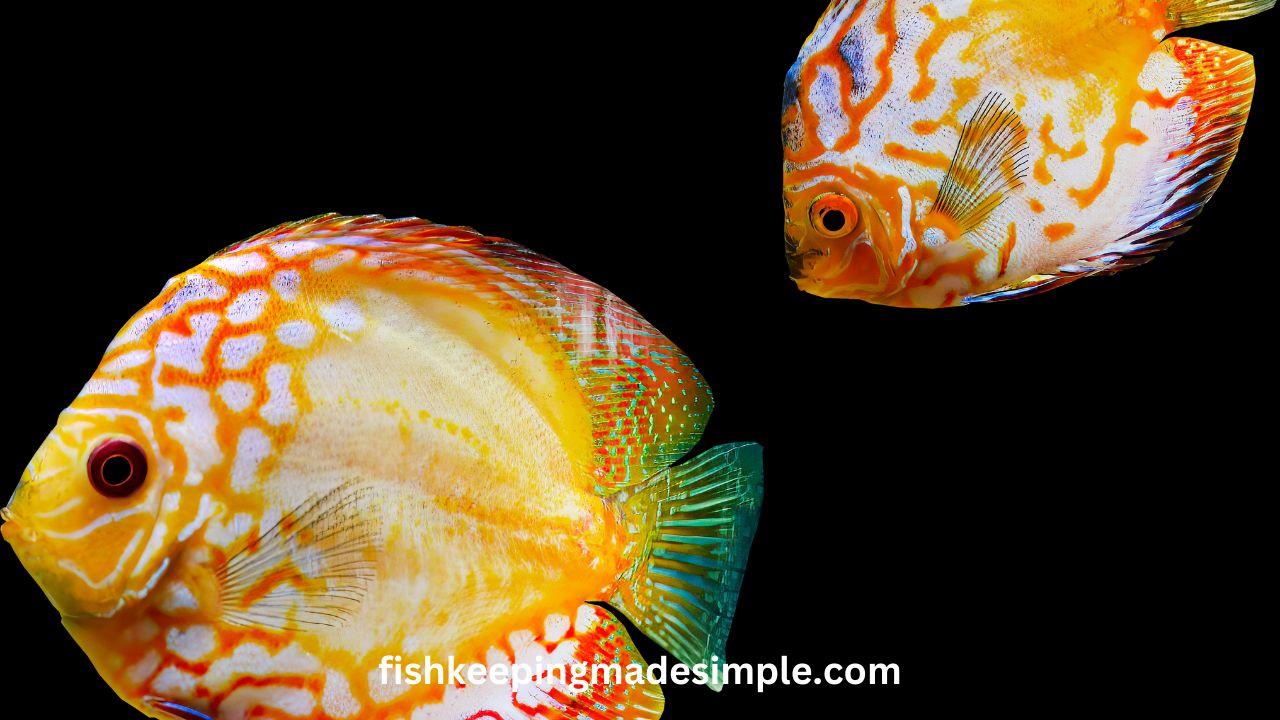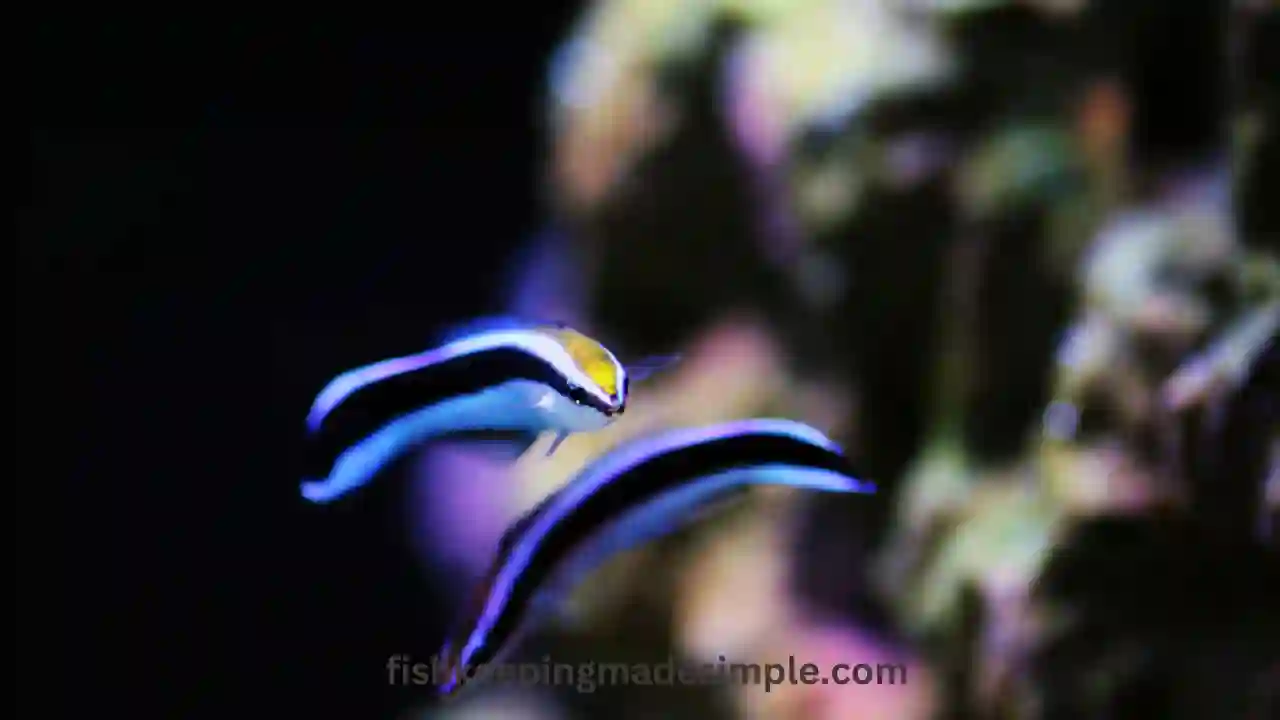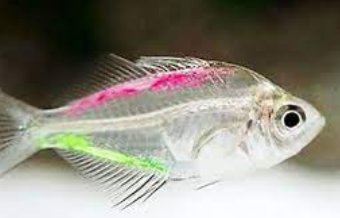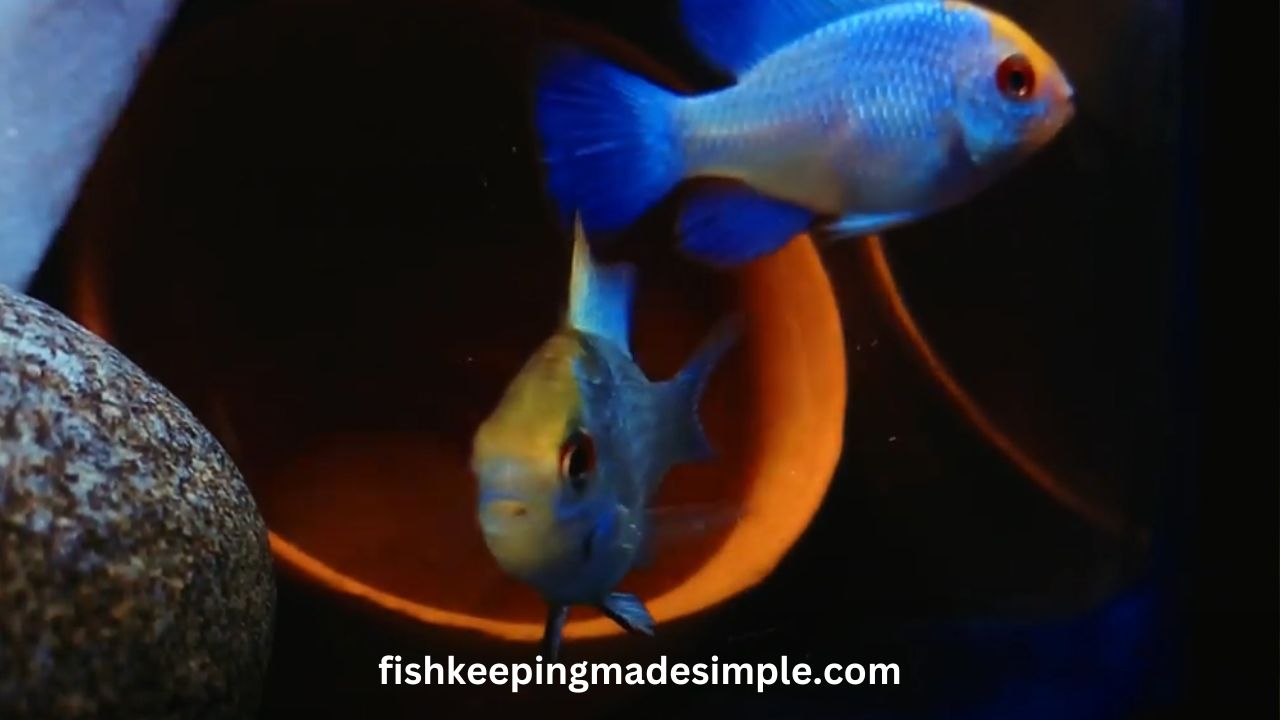Breeding Caridina shrimp : Caridina shrimp are loved for their bright colors and gentle look. They come from Southeast Asia and love soft, acidic water. Breeding them is a rewarding hobby that lets you see their life cycle up close.
To breed Caridina shrimp, you need to know their needs and create a natural habitat. The right water, a good tank setup, and care can help you raise healthy shrimp. This way, you can enjoy watching your shrimp grow and thrive.
Table of Contents
Key Takeaways
- Caridina shrimp require soft water with low pH for optimal breeding conditions
- A well-designed shrimp breeding tank setup is crucial for success
- Understanding the specific water parameters for Caridina shrimp is essential
- Proper care techniques and attention to detail can greatly improve breeding outcomes
- Breeding Caridina shrimp can be a rewarding and educational experience for aquarium enthusiasts
Understanding Caridina Shrimp Species
Caridina shrimp are fascinating and diverse, loved by many aquarium fans. They belong to the family Atyidae and are known for their bright colors and patterns. We’ll look into their history and origins, and some of the most popular varieties.
Natural History and Origins
Caridina shrimp come from the clean waters of Hong Kong, Taiwan, and China. These places have many different water environments, perfect for these shrimp. Over time, through breeding and genetic changes, many varieties have appeared, each with its own look.
Popular Caridina Shrimp Varieties
Some Caridina shrimp species are more popular than others:
- Blue Bolt Caridina Shrimp: Known for their bright blue color, Blue Bolt shrimp are a favorite. Their colors and patterns make them stand out in any tank.
- Crystal Red Shrimp: These shrimp have a beautiful red and white color. They are unique because of their changing colors and patterns.
- Panda Caridina Shrimp: These shrimp look like pandas with their black and white spots. They add a fun touch to any tank.
- Bee Caridina Shrimp: Also called Crystal Black Shrimp, they have black and white stripes like a bee. They are bold and eye-catching.
- Tiger Caridina Shrimp: Tiger shrimp have stripes that look like a tiger’s. They come in different colors and patterns, adding beauty to any tank.
| Caridina Shrimp Species | Origin | Distinguishing Features |
|---|---|---|
| Blue Bolt Caridina Shrimp | Taiwan | Striking blue coloration, intricate patterns |
| Crystal Red Shrimp | Hong Kong, China | Red and white coloration, varying intensities and patterns |
| Panda Caridina Shrimp | Taiwan | Black and white markings resembling a panda bear |
| Bee Caridina Shrimp | China | Black and white banding, bold and dramatic presence |
| Tiger Caridina Shrimp | Taiwan | Striking stripes and patterns, various color morphs |
These shrimp have won the hearts of many aquarium fans. They bring color, patterns, and personality to any tank. Their beauty and charm make caring for them a joy.
Optimal Tank Conditions for Caridina Shrimp
Creating the perfect home for Caridina shrimp is key to their health. These shrimp come from Asia’s soft, acidic waters. To keep them happy, you need to mimic their natural habitat.
Keeping the water quality stable is crucial. The right water parameters help these sensitive creatures thrive in your tank.
Water Parameters and pH Requirements
Caridina shrimp need specific water conditions to stay healthy. They love soft water with low pH, just like their home. Here are the ideal water parameters for them:
- Ammonia and Nitrite: 0 ppm
- Nitrate: Below 10 ppm
- Total Dissolved Solids (TDS): 80-150 ppm
- General Hardness (GH): 3-6 dGH
- Carbonate Hardness (KH): 0-1 dKH
- pH: 6.0-6.8
- Temperature: Below 74°F (23°C)
Regular water testing is vital. A good water testing kit helps you catch any changes in your tank.
Importance of Stable Water Quality
Stable water quality is essential for your Caridina shrimp’s health. They can get stressed or even die from sudden water changes. To keep the water stable:
- Change 10-25% of the tank water weekly.
- Use a top-notch filtration system to clean the water.
- Avoid overfeeding to prevent water problems.
- Check water parameters often and fix any issues quickly.
ADA Aqua Soil is great for keeping acidic water in your tank. It lowers pH and feeds plants and beneficial bacteria, making your tank healthy.
| Water Parameter | Caridina Shrimp | Neocaridina Shrimp |
|---|---|---|
| pH | 6.0-6.8 | 6.5-8.0 |
| TDS (ppm) | 80-150 | 200-300 |
| GH (dGH) | 3-6 | 4-8 |
| KH (dKH) | 0-1 | 3-15 |
| Temperature (°F) | Below 74 | 65-84 |
By focusing on soft water, low pH, and stable water, you can create a great home for your Caridina shrimp.
Setting up a Suitable Aquarium
Creating a home for Caridina shrimp means making their natural habitat. Think about the substrate, filtration, and design of the tank.
Substrate and Filtration Considerations
The right substrate is key for a healthy shrimp tank. ADA Aqua Soil is great because it keeps the pH just right for shrimp. To figure out how much substrate you need, use this formula:
Tank Length (inches) x Tank Width (inches) x Desired substrate height (inches) = Total substrate volume needed (cubic inches)
For tanks without plants, 1 inch of substrate is enough. But, if you have plants, you’ll need 2 to 3 inches. To find out how many liters of substrate you need, divide the volume in cubic inches by 60. ADA Aqua Soil comes in liters, making it easy to buy the right amount.
Good filtration is also essential for clean water. You can choose from sponge filters, hang-on-back filters, or canister filters. Make sure your filter has mechanical, biological, and chemical media. This helps remove waste and keeps the water balanced.
Aquarium Plants and Hiding Places
Plants are important for a healthy shrimp tank. They offer hiding spots and help keep the water clean. Some good plants for shrimp tanks include:
- Java Moss
- Christmas Moss
- Flame Moss
- Dwarf Hairgrass
- Cryptocoryne species
- Bucephalandra species
Adding driftwood, rocks, and shrimp hides makes the tank look good. It also gives shrimp places to hide and helps plants grow. These elements also support biofilm, a natural food source for shrimp.
Give your tank time to cycle and get ready for shrimp. This can take 2 months. While waiting, check the water often. Make sure ammonia and nitrite levels are zero, and nitrates are under 20 ppm. Keep the temperature between 68-74°F (20-23°C) and the TDS between 140-150 ppm for the best shrimp health.
Water Parameters for Breeding Caridina Shrimp
Keeping the right water conditions is crucial for breeding Caridina shrimp. These tiny creatures need a stable environment with the right pH, TDS levels, and other factors to breed well. As a breeder, I’ve learned that paying close attention to these details is essential for success.
pH Range and Stability
Caridina shrimp like a slightly acidic water, best between pH 6.0 and 6.8. Keeping the pH stable is vital for their health and breeding. Changes in pH can stress and even kill them. To keep it stable, I do regular water changes, use good filtration, and sometimes add buffers.
Total Dissolved Solids (TDS) Levels
Total dissolved solids (TDS) are important for Caridina shrimp water quality. TDS shows the amount of minerals and other substances in the water. For breeding, I aim for TDS between 80 and 150 ppm. I use a TDS meter to check and adjust as needed.
Other important water parameters for breeding Caridina shrimp include:
| Parameter | Recommended Range |
|---|---|
| Temperature | Below 74°F (~ 23°C) |
| GH (General Hardness) | 3-6 dGH |
| KH (Carbonate Hardness) | 0-1 dKH |
| Ammonia | 0 ppm |
| Nitrite | 0 ppm |
| Nitrate | Below 10 ppm |
By monitoring and keeping these water parameters right, I’ve bred many Caridina shrimp species. This includes the popular Crystal Red Shrimp (CRS) and Taiwan Bee Shrimp. Remember, consistency and stability are key to creating the best environment for these amazing creatures to thrive and breed in captivity.
Nutritional Requirements of Caridina Shrimp
It’s vital to give Caridina shrimp a balanced diet for their health and breeding success. They have specific food needs that help them breed naturally. A varied diet with algae, biofilm, and microorganisms is essential.
Start with small pellets for shrimp feeding and adjust as needed. Include high-quality fish food, sinking shrimp pellets, and small frozen foods. Vegetables like spinach or kale are also good. Protein-rich foods, like Pure Nordic Aminostix, help with egg production and should replace 1-2 feedings a week.
As shrimp grow and show saddles (pre-fertilized eggs), introduce powder foods like Pure Nordic Nutridust or Nutrigreens in small amounts. When babies are in the tank, increase powder food to twice a week. But, don’t feed more than once a week when there are no babies.
Feeding shrimp twice a day with smaller portions is okay. This approach offers a varied diet and can keep shrimp healthy. Once baby shrimp appear, add supplements like Pure Nordic Mineral, Pro Probiotic, and Green Herb. Rotate these supplements once or twice a week.
| Shrimp Stage | Recommended Feeding | Frequency |
|---|---|---|
| Adults | Small pellets, high-quality fish food, vegetables | Twice daily, small portions |
| Saddle-bearing females | Powder foods (Nutridust, Nutrigreens) | Small amounts, once a week |
| Babies present | Powder foods, supplements (Mineral, Pro Probiotic, Green Herb) | Twice a week, rotated |
To help baby shrimp survive, keep feeding them powder foods at least twice a week until they can eat larger pellets. Remember, each tank is different, so adjust feeding schedules accordingly. Caridina shrimp can be picky, so be patient and watch their eating habits closely to find the right Caridina shrimp diet for balanced nutrition.
Dietary Preferences for Breeding
Caridina shrimp need a varied and nutritious diet for successful breeding. They are omnivores, eating both plants and proteins. In the wild, they eat algae, biofilm, and decaying plants.
Primary Food Sources
In aquariums, algae wafers are a great food for them. These wafers have vitamins and minerals for growth and reproduction. They help ensure the shrimp get the nutrients they need to breed well.
Supplementary Feeding Options
For breeding Caridina shrimp, adding more food types is helpful:
- Blanched Vegetables: Softened spinach, zucchini, and kale are good. Blanch them in boiling water before giving them to the shrimp.
- Live or Frozen Prey: Small worms or daphnia are great. They mimic their natural hunting and provide protein for breeding.
It’s important to feed them in moderation. Too much food can harm the water quality. Remove any leftover food after a few hours to keep the water clean.
| Shrimp Species | Primary Food Source | Supplementary Foods |
|---|---|---|
| Caridina cantonensis | Algae Wafers | Blanched spinach, kale |
| Caridina serrata | Algae Wafers | Blanched zucchini, small worms |
| Cardinal Shrimp | Fine or Powdered Foods | Biofilm, detritus |
Offering a balanced diet with both main and extra foods is key. Watch how they eat and adjust their diet to keep them healthy and thriving.
Feeding Frequency and Quantity
It’s key to feed Caridina shrimp the right amount and frequency for their health. Feed them small amounts 2-3 times a week. This keeps them well-nourished without causing water quality problems.
Watch how fast the shrimp eat their food. They should eat it all in 1-2 hours. If there’s leftover food, feed them less next time. If they eat it all quickly, you can give them a bit more.
To avoid overfeeding, follow this schedule:
- Begin with a full meal like Pure Nordic Daybyday or Hwa comprehensive for a balanced diet.
- Give them protein-rich foods like Pure Nordic Aminostix 1-2 times a week to help with egg production.
- Add powder foods like Pure Nordic Nutridust or Nutrigreens in small amounts when they show saddles, meaning they’re ready for baby shrimp.
- Start feeding more often once baby shrimp appear, adding supplements like Pure Nordic Mineral, Pro Probiotic, or Green Herb once or twice a week.
Feeding twice a day is okay, but adjust the amounts to keep their diet varied and their health top-notch. Keep feeding them powder foods at least twice a week until they can eat bigger pellets.
| Shrimp Type | Feeding Frequency | Feeding Quantity |
|---|---|---|
| Adult Caridina Shrimp | 2-3 times per week | Amount consumed within 1-2 hours |
| Baby Caridina Shrimp | Daily, with powder foods 2+ times per week | Small amounts, gradually increasing as they grow |
| Red Cherry Shrimp | Once per day | Amount consumed within 2-3 hours |
Remember, feeding times can differ in each tank since shrimp have their own likes. By watching how they eat and adjusting, you can make sure they get the right food. This helps keep them healthy and the water quality good.
Breeding Process of Caridina Shrimp
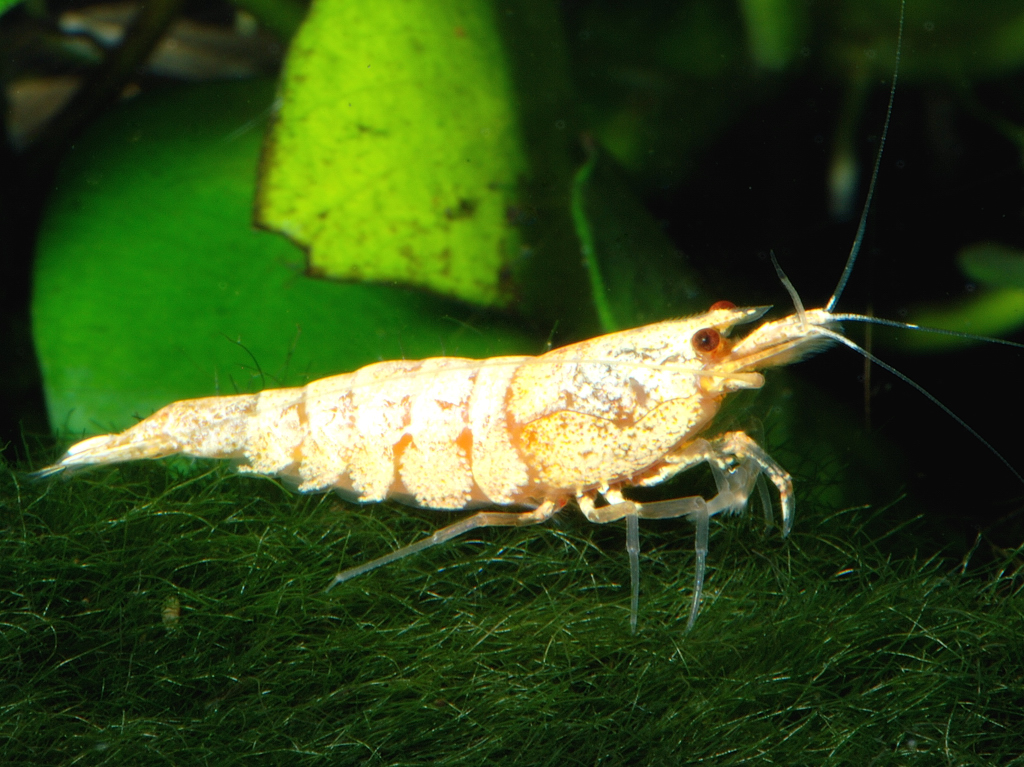
Caridina shrimp breeding is a detailed process that needs careful attention. It requires a deep understanding of the shrimp’s natural lifecycle. As a shrimp breeder, I’ve learned that the key to success is providing the best conditions for the shrimp to thrive and reproduce.
Pre-Breeding Preparation
Before breeding Caridina shrimp, setting up the breeding tank is crucial. The water parameters must be monitored and kept within the ideal range for the species. Most Caridina shrimp prefer a pH of 6.0 to 6.8, a gH of 4 to 6, and a kH of no more than 1. The water temperature should be stable, around 78℉ (27℃).
The breeding tank also needs hiding places, like plants, rocks, and driftwood. These provide the shrimp with security and reduce stress, which is important for breeding success.
Mating and Reproduction Lifecycle
Caridina shrimp mating happens when the female molts and releases pheromones. The male is attracted to these pheromones and fertilizes the eggs. The female carries the eggs for about 3-4 weeks, during which time stable water conditions and a nutritious diet are crucial for egg development.
After the eggs hatch, the tiny shrimplets emerge. They need special care and attention to survive and grow. Regular water changes of about 15% twice weekly help maintain water quality and support healthy development.
| Species | pH Range | gH Range | kH Range | Temperature Range |
|---|---|---|---|---|
| Caridina Cantonensis | 5.8-6.8 | 4-6 dGH | 0-1 dKH | 68-75°F |
| Caridina Serrata | 6.0-7.0 | 3-8 dGH | 1-4 dKH | 64-78°F |
By monitoring the breeding process and providing optimal conditions, hobbyists and breeders can successfully raise healthy, vibrant Caridina shrimp. With dedication and attention to detail, the rewards of watching these fascinating creatures thrive and reproduce are well worth the effort.
Factors Influencing Breeding Success
Several key factors affect Caridina shrimp breeding success. Water temperature and gender ratios are crucial. Selective breeding also plays a big role in improving offspring quality.
Water Temperature and Gender Ratios
Keeping the water temperature right is key for Caridina shrimp breeding. The temperature affects the gender ratio of the shrimplets. Higher temperatures lead to more males, while lower temperatures result in more females.
To get a balanced gender ratio, keep the water at 22°C (71.6°F). This temperature range helps in successful breeding and ensures a healthy, diverse shrimp population.
The gender ratio in the breeding group is also important. Caridina shrimp should be in groups of 8-10. A minimum of 5 shrimp is needed to stimulate molting and reproduction. The breeder in this article uses 40L tanks with 2 males and 6-10 females. This ratio helps in successful mating and breeding.
| Water Temperature | Gender Ratio | Breeding Success |
|---|---|---|
| 22°C (71.6°F) | 2 males : 6-10 females | Optimal |
| Above 22°C | Higher proportion of males | Reduced |
| Below 22°C | Higher proportion of females | Reduced |
Selective Breeding Practices
Selective breeding enhances the quality and appeal of Caridina shrimp offspring. By choosing breeding pairs based on desirable traits, breeders can improve shrimp quality. This increases their value in the market.
To effectively practice selective breeding, keep detailed records of shrimp lineage and traits. Tracking parentage and observing offspring development helps in making informed breeding decisions. This ensures the desired traits are passed down, leading to high-quality shrimp.
Using specialized products like Lubao can also aid in selective breeding. Lubao, when used correctly, can increase female readiness, reduce cannibalism, and improve breeding results. These practices create an optimal environment for the health and reproduction of selectively bred shrimp.
Grading System for Caridina Shrimp
As a shrimp enthusiast, I’ve learned a lot about the Caridina shrimp grading system. It’s based on color, patterns, and quality. This system helps both hobbyists and breeders see the value of each shrimp.
Factors Influencing Shrimp Grading
Several things affect a Caridina shrimp’s grade. Color is key, with bright and rich colors getting higher grades. Patterns also matter, with clear and detailed ones being more valuable.
The shrimp’s lineage also plays a role. Shrimp from well-known breeding lines, like the Pure Red Line (PRL), are often graded higher. This is because they have consistent quality and desirable traits.
Interpreting the Grading System
Knowing the Caridina shrimp grading system is crucial. It helps when buying or breeding these creatures. The system ranges from C grade (lowest) to SSS grade (highest), showing different levels of quality.
| Grade | Characteristics |
|---|---|
| SSS | Highest grade, vibrant coloration, well-defined patterns, high white coverage |
| SS | Excellent coloration, distinct patterns, significant white coverage |
| S | Vibrant coloration, clear patterns, good white coverage |
| A | Good coloration, visible patterns, moderate white coverage |
| B | Decent coloration, less defined patterns, some white coverage |
| C | Lowest grade, less vibrant coloration, minimal white coverage |
Within each grade, there are further distinctions. For example, SSS grade Crystal Red shrimp can have Mosura patterns like Flower, Crown, Heart, and Smiley. Other patterns, like Hinomaru and V-band, can also increase a shrimp’s grade and value.
Learning about the Caridina shrimp grading system has deepened my appreciation for these creatures. It helps me choose the best shrimp for my aquarium or breeding projects. Understanding the system has been a key part of my journey as a shrimp enthusiast.
“Blushing” in Caridina Shrimp
Keeping Caridina shrimp is fascinating, especially the “blushing” phenomenon. This term describes the vibrant colors in their exoskeleton. These colors make them visually stunning.
Several factors influence blushing in Caridina shrimp. Genetics, water conditions, and diet play a role. Shrimp with strong blushing have more intense colors. Stable water conditions and a nutritious diet help bring out these colors.
Blushing isn’t unique to Caridina shrimp. Other aquarium species also show similar color traits. For example, the “Highfin Blushing Tetra” is a fish with blushing characteristics. This shows the wide range of colors in aquatic life.
Understanding blushing in Caridina shrimp adds to the fun of keeping them. By choosing the right shrimp, maintaining good water conditions, and feeding them well, you can create a beautiful aquarium. This showcases the natural beauty of these invertebrates.
FAQ
What are the ideal water parameters for breeding Caridina shrimp?
How can I set up a suitable aquarium for Caridina shrimp?
What should I feed my Caridina shrimp for successful breeding?
How often should I feed my Caridina shrimp?
What factors influence the breeding success of Caridina shrimp?
How are Caridina shrimp graded?
What does “blushing” mean in Caridina shrimp?
Reference
| International Body | Website |
| American Aquarium Association | https://www.americanaquariumproducts.com/ |
| Aquatic Plant Society | https://www.aquaticplantsociety.org/ |
| Aquatic Veterinarians | https://www.aquavetmed.info/ |
| International Aquatic Plants Society | https://www.iapso-online.com/ |
| International Shrimp Competitions | https://www.shrimpspot.com/ |
| Shrimp and Freshwater Invertebrates | https://www.shrimpspot.com/forums/freshwater-invertebrates.37/ |
I am a passionate aquarist with over 30 years of hands-on experience in fishkeeping. My journey began at a young age, collecting fish from the wild and learning through experimentation. Specializing in tropical fish, I bring a deep understanding of the hobby to FishKeepingMadeSimple. The site provides honest, detailed reviews of essential products and accessories to help fellow enthusiasts create the best environments for their fish.


